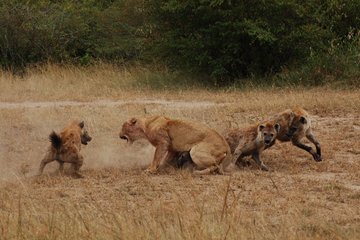Ten questions to guide behavioral experiments
A new paper asks behavioral scientists: how well do you know your animal?
An international team of experts in animal behavior and neurobiology advocates for rethinking behavioral research design. Recent advances in technical possibilities and our increasing knowledge about animal behaviors open up enormous opportunities to incorporate more realism into behavioral studies. The ten-step “guideline” encourages researchers to (re-)engage with their animals’ ecology and lifestyle. Ultimately appreciating an animal holistically will help advance our understanding of their natural behaviors and ground observations made in the laboratory in ecological and evolutionary relevance.
Natural collective behavior of C. elegans
While teaching a workshop on the Neurophysics of Motion, researchers from four American Universities and two German Max Planck Institutes, all working on different animals and problems, started discussing their dream for behavioral research. Together, they realized that advanced technologies such as the “genetic scissor” tool CRISPR or AI-powered tracking of moving animals was a game changer: Suddenly researchers could expand their questions and incorporate more realistic scenarios into behavioral research. What began as a conversation led to a joint publication, encouraging all those who work with animals, even with classic model systems, to think outside the box and to benefit from approaches found in other areas of behavioral research.
Where are you from? Who are your friends and enemies? What are you looking for? And what are you thinking about right now? The proposed “guideline”, inspired by the column “to fall in love with anyone, do this”, a 36-questions-guide for falling in love by Mandy Len Catron (New York Times, 2015), consists of ten questions. Answering them helps to identify information necessary to bridge the gap between controlled laboratory settings and the natural habitat, and hopefully ignite a spark in researchers to better understand their animal – and to fall in love with it.
The commentary was co-authored by Serena Ding from the Max Planck Institute of Animal Behavior and Monika Scholz from the Max Planck Institute for Neurobiology of Behavior who both study behavior and decision-making using the classic laboratory roundworm C. elegans. In her Genes and Behavior research group, Ding explores collective behaviors of C. elegans, such as towering and aggregations, and seeks to understand the proximate and ultimate causes of these remarkable phenomena.
Whether working with popular laboratory model organisms such as C. elegans or the fruit fly Drosophila, web-building spiders or studying fish in the wild - the authors advocate for embracing a deeper understanding of animal behavior, for using the powerful new technologies to bring naturalistic contexts into the labs, or for venturing out of the lab. It is precisely these studies that are crucial for understanding complex behaviors. This publication is a delightful read for everyone in animal research.











